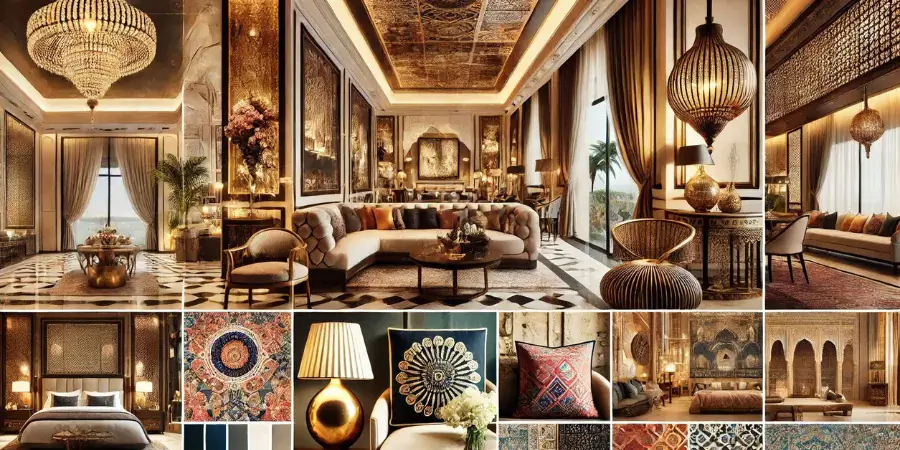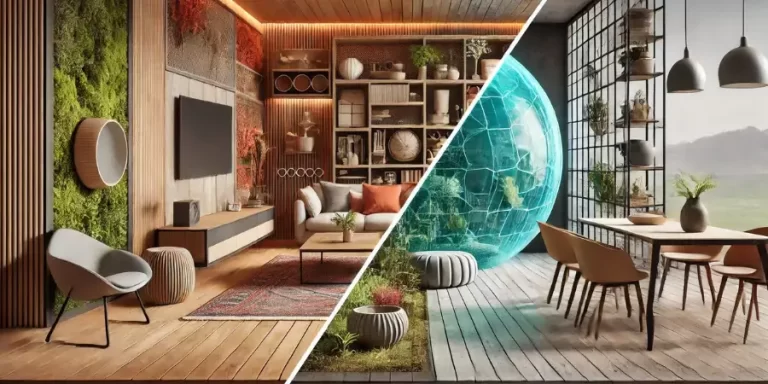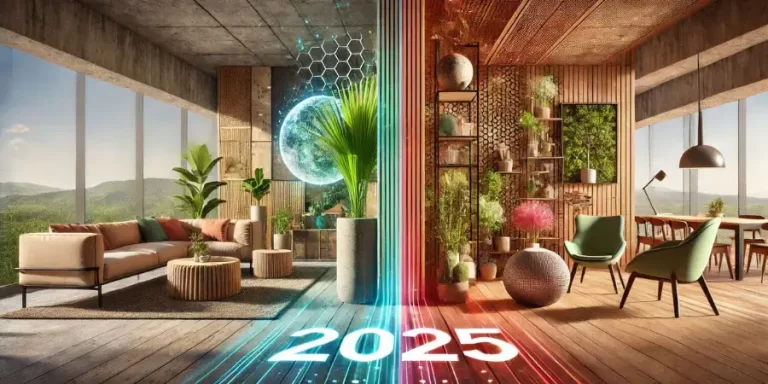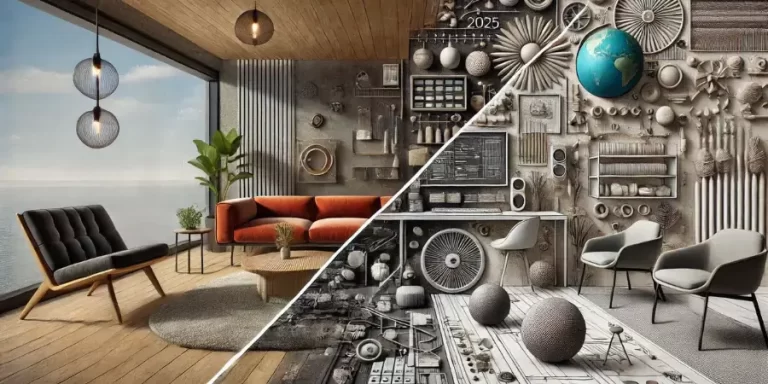Luxury boutique hotels in India are gaining immense popularity, as more travelers seek unique and personalized experiences rather than conventional hotel stays. These properties, often smaller in size, emphasize distinctive aesthetics, intimate atmospheres, and exceptional service. The interior design of these boutique hotels plays a significant role in creating a memorable guest experience, blending functionality with luxury while reflecting the essence of Indian culture and heritage. If you’re looking to design or revamp a luxury boutique hotel in India, here are some expert tips to help you create an unforgettable and sophisticated space.
- Incorporate Local Culture and Heritage
India is a country rich in culture, traditions, and craftsmanship, and these elements should be reflected in the interior design of luxury boutique hotels. Whether your property is located in Rajasthan, Kerala, or Goa, showcasing regional art, textiles, and handicrafts can provide a unique and authentic atmosphere.
For instance, in Rajasthan, incorporating traditional Mughal-style arches, ornate mirrors, and rich, warm colors like gold and maroon can evoke the grandeur of palaces. In Kerala, using natural materials like wood, cane, and bamboo along with tropical plants can create a calming, earthy ambiance that mirrors the beauty of the state’s backwaters. By blending luxury with local craftsmanship, your boutique hotel can offer a rich cultural experience while maintaining a modern, high-end aesthetic.
- Create a Welcoming Lobby
The lobby serves as the first impression of the hotel, so it should immediately convey a sense of luxury and comfort. Use high-end materials such as marble, polished wood, or natural stone to create an elegant look. Bold, eye-catching art pieces or sculptural furniture can set the tone for the rest of the hotel, giving it a distinctive personality.
Consider creating an open, spacious lobby with cozy seating arrangements and ambient lighting to invite guests to relax and unwind. A well-designed lobby can set the tone for the entire hotel experience, making it a memorable part of the stay. Incorporating elements such as a signature scent or customized music playlists can also add to the welcoming atmosphere.
- Focus on Comfort with High-Quality Furnishings
In luxury boutique hotels, comfort is just as important as aesthetics. Invest in high-quality, custom-designed furniture to offer guests both luxury and comfort. Comfortable beds, plush upholstery, and ergonomically designed furniture should be prioritized to ensure an exceptional guest experience.
Use luxurious fabrics such as velvet, silk, and cashmere for bedding, curtains, and cushions. Choose mattresses and linens of superior quality to ensure a restful sleep. Additionally, integrating mood lighting and adjustable lighting options in each room can enhance the comfort and personalization for guests.
- Personalized Guest Rooms
Personalization is key to luxury boutique hotels, and the interior design of each guest room should reflect this ethos. Customizable options for room layouts, furniture, and decor can enhance the overall guest experience. Use different color palettes and textures in each room to create individuality, making guests feel as though they are staying in a space that suits their style.
Technology plays a vital role in luxury stays, so incorporating smart systems for controlling lighting, temperature, and entertainment is a must. Integrated sound systems, large flat-screen TVs, and high-speed internet access are essential for modern, tech-savvy guests. Additionally, include premium toiletries, bathrobes, and other luxury amenities to further elevate the guest experience.
- Leverage Natural Light and Ventilation
Natural light can dramatically enhance the ambiance of a boutique hotel, making spaces feel more inviting and vibrant. Maximizing natural light is not only energy-efficient but also boosts the overall aesthetic appeal of the hotel. Consider large windows or glass doors that allow sunlight to flood the interior, especially in public spaces such as the lobby, restaurant, and lounge areas.
In the guest rooms, large windows with scenic views can make the stay more memorable. Opt for sheer curtains or blinds that allow light to filter in while still maintaining privacy. Good ventilation is also essential, especially in tropical climates. Incorporating elements such as ceiling fans or air purifiers can improve air quality and comfort.
- Create Seamless Indoor-Outdoor Spaces
In a country like India, where the weather can be warm for a significant portion of the year, incorporating outdoor spaces into the design of a boutique hotel can provide a luxurious touch. Private balconies, garden courtyards, rooftop terraces, and outdoor lounges are excellent ways to connect guests with nature.
For hotels located in cities with scenic views, consider adding outdoor seating areas where guests can relax while enjoying the view. In coastal areas like Goa or Kerala, terrace lounges with comfortable seating arrangements overlooking the ocean or lush landscapes can add an element of tranquility to the hotel experience. Ensure these outdoor spaces are furnished with durable yet stylish materials that complement the hotel’s aesthetic.
- Lighting Design for Ambience and Functionality
Lighting is a powerful tool in interior design, particularly for luxury boutique hotels where ambiance plays a crucial role in shaping the guest experience. Use layered lighting, including ambient, task, and accent lighting, to create a warm, welcoming atmosphere.
In the lobby and public spaces, statement chandeliers or contemporary light fixtures can be used as decorative focal points. In the rooms, soft lighting should be used to create a relaxing and cozy environment. Adjustable bedside lamps, dimmable ceiling lights, and wall-mounted fixtures can give guests full control over their lighting preferences.
Additionally, integrating smart lighting systems that can be controlled through a mobile app or voice commands adds a modern touch and provides added convenience for guests.
- Functional yet Stylish Amenities
Luxury boutique hotels in India should offer amenities that are functional, stylish, and align with the overall design theme. Whether it’s a well-curated minibar with local specialties, a well-stocked bathroom with luxurious products, or high-tech in-room entertainment, every amenity should reflect the hotel’s commitment to providing an exceptional experience.
For instance, incorporating artisanal and locally sourced products into your bathroom design can enhance the sense of place while supporting local artisans. Smart appliances such as a coffee machine, mini-fridge, or smart TV can add both luxury and functionality to the rooms.
- Sustainability and Eco-Friendly Design
Sustainability is becoming an increasingly important factor in the hospitality industry, and many luxury boutique hotels in India are embracing eco-friendly design practices. Incorporate sustainable materials such as bamboo, reclaimed wood, and recycled textiles into the interior design to reduce the environmental footprint.
Additionally, energy-efficient lighting, water-saving fixtures, and waste-recycling initiatives should be integrated into the hotel’s operations. Eco-conscious guests will appreciate the hotel’s commitment to sustainability, and it can become a selling point in a competitive market.
Conclusion
Designing a luxury boutique hotel in India requires a balance of opulence, comfort, and individuality. By focusing on elements like local heritage, high-quality furnishings, smart technology, natural light, and sustainability, you can create a truly unique space that appeals to modern travelers seeking luxury and authenticity. A well-designed boutique hotel offers an immersive experience, one that goes beyond just a place to stay—it becomes a destination in itself, providing guests with a memorable and personalized escape.




